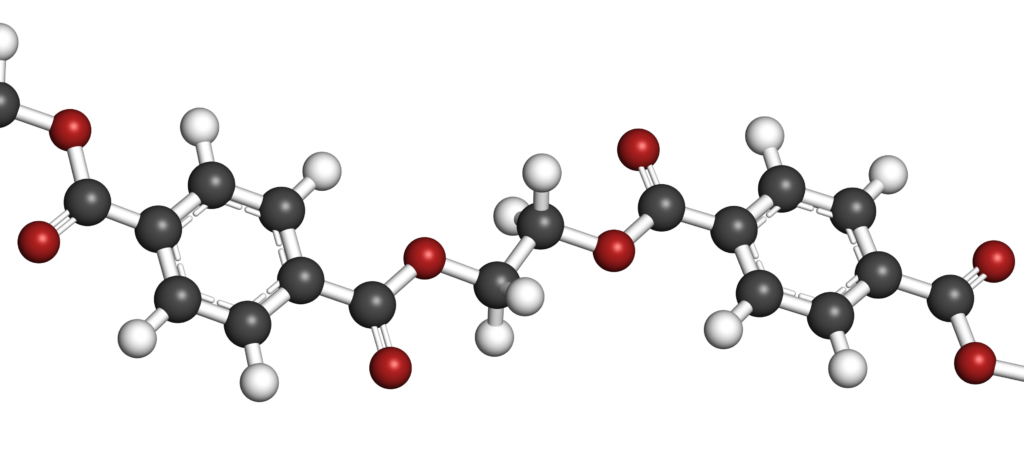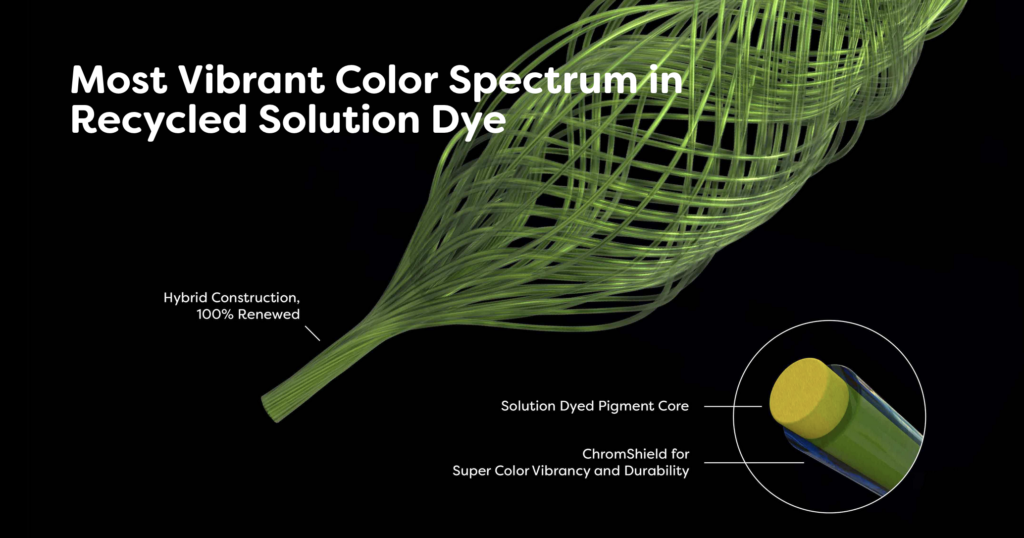Polyester fiber has come a long way since the uncomfortable suits of the 1960s. Thanks to technology, the fabric quality and feel has improved. Today, polyester is the most popular fiber in the world. It accounts for roughly half of the overall fiber market and around 80 percent of synthetics, according to Textile Exchange. But many wonder: What exactly is polyester? What is it made out of? And how is it different from other textiles?

First, consider that polyester was discovered in a chemistry lab, not a textile mill. Polyester is a polymer, a long chain of repeating molecular units. Those units typically include an acid, an alcohol, and an ester (a type of organic compound). The most common type of polyester is polyethylene terephthalate, or PET. PET is typically derived from crude oil. It’s the same kind of plastic companies use to make things like soda or water bottles. When you melt PET, you can stretch it like taffy. The more you stretch it, the more it resembles long filaments, which become fibers. Weave together those fibers, and you create polyester fabric. Sometimes, manufacturers combine the fibers with other textiles or materials to create polyester blends.

The result is a fabric that is strong, resistant to shrinking or stretching, quick-drying, and more durable than natural fibers. In other words, fabrics that are ideal for active and everyday wear.
Polyester Benefits
Over the past several years, clothing manufacturers have seen the benefits of polyester. Unlike leisure suits of the 1960s, today people can’t tell by looking at a garment whether it’s polyester. It’s inexpensive, easy to blend with other materials, and it can be gentle on the environment too. Unlike cotton, which requires extensive land, water, and labor to mill, polyester can be created from recycled bottles, old fabric scraps, or various combinations of virgin and recycled fabric. Technologies like ChromShield ensure that the recycled fibers are just as beautiful and vibrant as virgin fiber.

In fact, more and more, companies are looking to recycled plastic bottles as a source for creating new polyester fiber. Innovations in plastic recycling and fiber blends means that one garment may contain a mix of recycled and virgin polyester, or a blend of polyester and natural fibers. The possibilities are endless.
To learn more about polyester fiber, contact change@sayarenew.com
